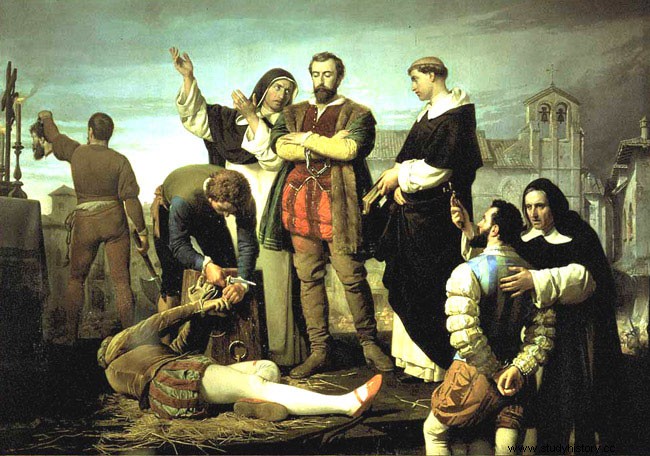The Battle of Villalar was not a great battle, but the War of the Comuneros was of great importance as it was the last revolution of the late Middle Ages or the first modern revolution.

After the death of Fernando el Católico and the regency of Cardinal Cisneros, Carlos I, grandson of Fernando, arrives in Spain in 1517. A 17-year-old monarch raised in the Court of Ghent who does not know the language and customs of the country he is going to rule.
He finds himself with a territory bled economically to maintain power abroad. The nobility revolted to recover the power lost in the time of the Catholic Monarchs and the wool bourgeoisie (wool was the most important resource at this time) faced those who wanted to export everything to Flanders and the textile manufacturers wanted it to stay in Castile.
Carlos I's main idea for Castile was to finance his appointment as Holy Roman Emperor, so he decided to raise taxes and surround himself with Flemish who control the court. this ruffled the spirits of the Castilians. In 1920 he leaves for Aachen to be named Emperor, with his pockets full to pay favors, and leaves Adriano de Utrecht (named Archbishop of Toledo) as regent.
This same year the revolt broke out in Toledo, but the Castilian cities quickly joined (Ávila, Segovia, Salamanca, Palencia, Burgos, Toro, Medina del Campo, etc.). On July 29, the Holy Board was formed in Ávila, where Juan Padilla, from Toledo, was appointed commander of the troops. The first idea of the community members is to look for a substitute for Emperor Carlos and they think of his mother, Juana "la loca". She is moved to Tordesillas where she is being held. There are two versions of Juana's refusal:one that she refused to avoid bloodshed between the two factions and another that they verified that she was really crazy. The fact is that she refused and the community members thought of forcing a negotiation with the emperor to lower taxes, so that the positions of commanders or corregidores would be chosen by them and the Flemish would leave Spain. At first, the comuneros, with a small army, and the emperor's supporters, disorganized, did not engage in direct battles but skirmishes.
An important event occurs at this time and that is that the nobles decide to back down and join the imperials, since by revolting the peasants may also lose more power than they are trying to recover. They have a powerful and numerous army.
In December the imperialists take Tordesillas and the Junta flees, later Burgos also falls. But Juan Padilla, Juan Bravo and Francisco Maldonado hit back and took Torrelobatón where they fortified themselves. The imperialist troops group together and the comuneros (some 6,000 men) flee to take refuge in Toro. The Count of Haro (at the head of the imperialist troops) sends his numerous cavalry to hunt them down, they are intercepted in Villalar (on April 23) and are devastated without being able to defend themselves. About a thousand community members die in the battle and the three leaders (Padilla, Bravo and Maldonado) are executed after a summary trial.
yesterday was the day to fight as a knight... today is the day to die as a Christian
Padilla said to Bravo
kill me first so as not to see the death of the greatest knight in Castile
Bravo replied.
The news spread through the rebel cities and they are giving way. But María Pacheco, wife of Juan Padilla and called the Lioness of Castile, at the head of Toledo still resisted until June 1521. In 1522 the monarch granted a general pardon.
A revolution that had everything to lose and that despite this, demonstrated the caste and honor of the Castilians against injustices. This made Carlos realize that he should pay more attention to Spain, which was the seed of his great Empire. He learned the language, under taxes and the Flemish ceased to hold power.


